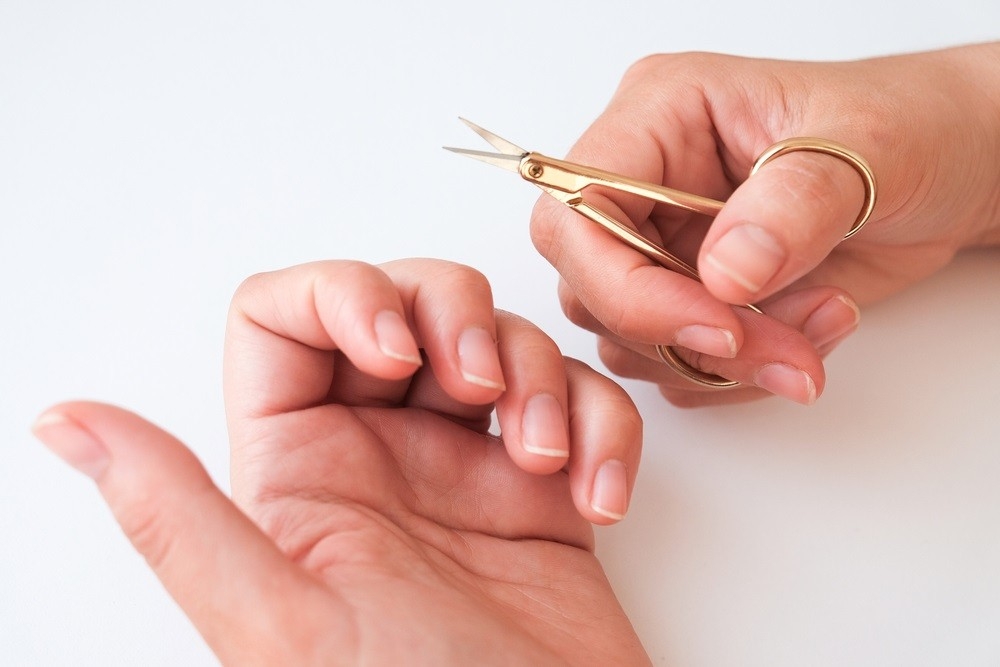Contents

It’s not uncommon to get a hangnail, but when they get infected, it may be rather uncomfortable and even painful. Hangnails that are infected will typically be red, swollen, and painful. Additionally, they may feel heated to the touch. Antibiotics could be required in order to cure an infection caused by a hangnail that is already infected. Proper nail care with Maby blog.
Signs and symptoms of a hangnail infection
If the skin that surrounds your fingernails is cut or torn, you run the risk of developing a common condition known as an infected hangnail. Hangnails can be painful and even require medical attention. It’s possible for the skin close to the nail to become infected, uncomfortably red, and swollen all at the same time.
If you have an infection, further symptoms may include feeling feverish and seeing drainage of pus. These symptoms frequently occur together in a patient. If you think you could have an infected hangnail, you should get treatment from your primary care provider as soon as possible. The typical components of treatment for this ailment include the administration of antibiotics and/or the surgical excision of the afflicted tissue.
What occurs if you ignore infected hangnails and do nothing about them
If you notice that you have a hangnail, you should seek treatment as soon as possible. If you do not treat the infection, it may become worse and spread to other areas of your hand or possibly your arm if you do not treat it.
Infections that go untreated can result in complications such as cellulitis, skin abscesses, and even sepsis.
Skin abscesses
Biting or picking at the skin, as well as having dry skin, can all lead to the development of hangnails. It is possible to develop a skin abscess by biting or picking at a hangnail, which can lead to an infection in the skin. A skin abscess is a painful and swollen bulge on the skin that is filled with pus and may be tender to the touch. If you have a hangnail and it gets infected, you may need to go to the doctor to get antibiotics in order to treat the infection. If you have a hangnail and it gets infected, you may need to see a doctor.
Cellulitis
Hangnails are quite prevalent and can be brought on by a variety of factors, including dry skin, picking at one’s nails, and the use of harsh chemicals. Hangnails, despite the fact that they might not seem like a huge concern, are actually capable of causing cellulitis, which is a dangerous infection that might require hospitalization.
If you have a hangnail, you need to make sure that it stays clean and dry at all times. As soon as it begins to look red or swollen, you should make an appointment with your doctor. Cellulitis is a serious infection that can only be treated successfully with medicines; therefore, it is imperative that you get medical attention if you suspect that you may be suffering from this condition.
Sepsis
Sepsis can be caused by ingrown toenails. If you have a hangnail, you need to make sure that it stays clean and dry at all times. It is possible that you will develop sepsis if the hangnail becomes infected. Sepsis is a disorder that poses a significant risk to a patient’s life since it can lead to organ failure and ultimately death. You should seek emergency medical assistance if you have any of the following symptoms: fever, chills, shortness of breath, high heart rate, disorientation, excessive perspiration, or edema.
Avoiding the spread of infected hangnails
It is crucial to be aware of how to stop hangnails from becoming infected in the first place because around half of all hangnails will become infected at some point. If your hangnails become infected, the resulting discomfort can be excruciating, and you may even need antibiotics to treat the infection.
Maintaining clean hands is one of the most effective measures you can do to protect a hangnail from developing an infection. It is important to wash your hands frequently and to stay away from touching your nails as much as you can. In the event that you are required to touch your nails, ensure that you wash your hands as soon as possible following.
Applying a topical antibiotic ointment or lotion to the hangnail is yet another method for preventing infection from occurring. This will assist in maintaining a sanitary environment that is free of microorganisms. You might also protect the region by wrapping it in a bandage or using a bandage to keep it clear of dirt and bacteria. In addition, please refer to: How to remove a hangnail and how to avoid getting one in the future.
Conclusion
In conclusion, an infected hangnail can be treated with a combination of over-the-counter drugs and treatments that are performed at home. Visit a medical professional in the event that the infection does not clear up after receiving therapy for a few days.
